 |
||
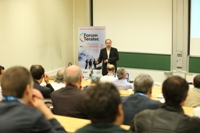
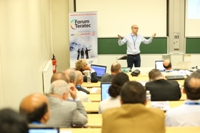
Home > TERATEC FORUM > Workshop 4
Big data, multiscale and materials
Chaired by Gilles ZERAH, CEA
Enabled by the development of HPC, simulation technologies and massive data storage, the current decade witnesses the progressive adoption of materials sciences simulation tools by industry.
Similar in impact to the introduction of finite elements methods in structural design, materials simulation methodology must provide engineers the tools for the conception, realization and optimisation of their objects in multifunctional contexts.
Two technologies are particularly relevant:
- Massive data analysis
- Multiscale modeling
Relying upon the predictive capacity of microscopic simulations, those techniques yield answers to these requirements.
This workshop will present recent algorithmic developments as well as applications.
|
|
|
|
|
|
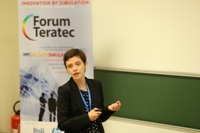 |
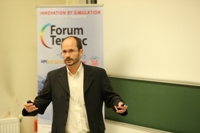 |
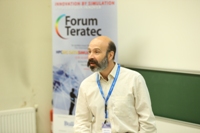 |
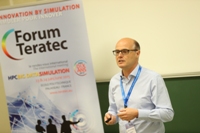 |
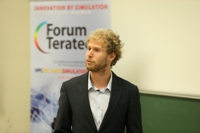 |
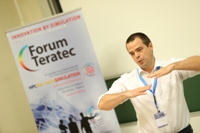 |
Materials play a critical role in many economic sectors. Having the right material, with the desired properties, that is durable under use and with age can be a critical factor in many industrial projects. Digital simulation is now applied to all industrial processes, and material simulation is a natural outgrowth of this movement. A few examples include:
- designing, optimizing, or discovering new materials via simulation
- computing material behavior that cannot be described by simple laws "on line"
- predicting or simulating changes in material properties over time
Because of the number of degrees of freedom required to describe them (quantum, atoms, molecules, surface area, impurities of all kinds), materials are heavy consumers of computing power. This is why adapting code to new-generation (exascale) machines is one challenge for the future.
The simulation of material properties has been profoundly changed by high performance computing, which lends itself particularly well to the purpose. The field has been transformed by a better grasp of the complexity and useful properties that generally result from interactions between multiple effects on multiple levels, from atomic to macroscopic, and from nanometers to millimeters. It has also been transformed by the very way these interactions are described, particularly on an atomic scale, which is the key to predictive material modeling. In turn, predictive simulation of material properties has become a prime industrial concern, both in simulating the behavior of systems and in creating new molecules or assemblies "in silico" to meet specific needs.
This workshop was intended to review current engineering practices in two industrial fields for which this type of simulation is particularly relevant: mechanics (Michelin) and chemicals (Unilever). In addition, simulations performed on the CEA's Tera 100 supercomputer were presented to demonstrate the possibilities of HPC under such extreme conditions. Finally, the Director of CECAM gave a presentation on the network, which European researchers have spent years building up as a place to constantly compare new ideas and advances. This long history is one of the reasons it is so dynamic.